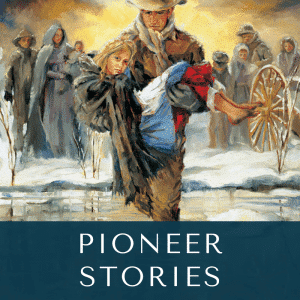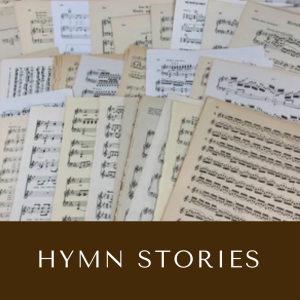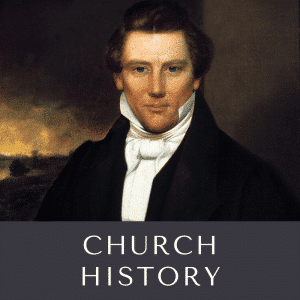Description
Creating Christmas
The year was 1824. A twelve-year-old boy named Charles lived with his parents, John and Elizabeth, and six siblings, in a poor neighborhood in Camden, a district of northwest London, England. His father worked as a pay clerk in the Royal Navy, receiving an income which required strict and careful money management to support his household. Before moving to Camden, his family had spent five years living in Chatham. Charles had loved those happy, carefree years. As a young boy there, his mother had taught him how to read. He even attended school in Chatham for two years, although much of his early education came from the things he read. By the time Charles was ten, he had devoured challenging books like Robinson Crusoe and Don Quixote, and even written a play.
When his father John’s work posting changed to London, Charles became aware of a serious family problem. His parents had the habit of spending more money each month than his father earned, and John was in debt to many creditors. In fact, he owed more money than he could earn in multiple years. The family had moved into cheaper, crowded quarters and bill collectors often knocked on their door. A baker, James Kerr, one of many people who John owed money to, insisted he be paid the £40 and 10-shillings which were due. In an attempt to pay the debt, all of the family’s household goods, including furniture and silverware, were sold. Unfortunately, that didn’t raise enough money.
Charles’ father was sent to Marshalsea Debtor’s Prison, a place where people who could not repay their bills were imprisoned. His wife and younger children would later live there with him in shared rooms. Charles’ parents decided that their bookish second child needed to leave school and help support them. A room was found for Charles to sleep in, and the twelve-year-old boy took a job for six shillings a week at Warren’s Blacking Factory. It was a rundown business which was owned by one of his mother’s relatives. The building on the banks of the River Thames was filthy, and had rotting boards in the floors and staircase. Rats swarmed in the cellars and boldly came up the stairs by the workers. Charles was ridiculed and harassed by the older boys who worked there, intellectually frustrated, and resentful. For ten hours a day, six days a week, he stood by a window for better light, filling and tying off small pots with shoe blacking [polish], and pasting labels on the containers.
Looking back on that time years later, Charles saw it was then that he lost his youthful innocence, saying that he questioned “how [he] could be so easily cast away at such a young age.” Though he visited his family at the prison weekly, he cried often and felt abandoned. John was released from Marshalsea Prison three months later, after paying his debts with money he inherited from his mother’s will.
The family’s financial situation was still tenuous, and Charles’ mother, Elizabeth, insisted that he remain working at the factory to provide income for the family. His father agreed. Charles was devastated. He wished for a life where he could continue studying and learning, escaping the poverty which surrounded him. Adding insult to injury, one day he looked out the factory window and saw his own father, now a free man, in a crowd gawking at him. After many more months, John’s father had employment and young Charles was able to leave the factory and briefly return to school. At fifteen, family problems and lack of money required him to stop any formal education and go to work.
As an adult, Charles told a friend,” I know how all these things have worked together to make me what I am, but I never afterwards forgot, I never shall forget, I never can forget.” Over the next seven years, while helping to support his family, he worked as an office boy, a law clerk, and reporter. Thirsting for knowledge, he continued his education. He bought a reading ticket to the British Museum and voraciously read many of the books in that large library. He even taught himself shorthand, a skill which was an advantage as a clerk and reporter. Who was this young man who found success in spite of so many obstacles? We know him today as Charles John Huffam Dickens – one of the most accomplished writers in the English language. He published twenty novels in his lifetime and all of them are still in print today.
The painful experiences of his youth, poverty, and social injustice were often the subjects of his writing. His stories, which were published in magazines a chapter at a time, became extremely popular. By 1837, when the installments were put in book form, Charles Dickens quickly became the most popular author of the day. In the following years, additional novels were written and well received, but Charles knew that his financial stability always depended upon the popularity of the next book which he would write.
In the fall of 1843, Charles was in desperate need of money. His current serialized novel was not selling as well as the previous ones had, and his publishers wanted to decrease his income from £200 to £150 per month – which would have been extremely difficult. Charles was a married man with four children and a fifth on the way, and as happened far too often throughout his life, his father needed extra money due to his extravagance and poor money management. Charles needed to write a book quickly.
That fall, Charles had visited schools for the poor in the slums, called “ragged schools” because of the worn clothes of children who came to them. He encountered children who lived as thieves and pickpockets to survive, just as he had seen in his own days of poverty. Charles was a champion of the poor and felt that Victorian society needed to treat its poorest and neediest members better. He hated child labor, hunger, and neglect. When half of the recorded deaths in London at that time were children, how could society turn a blind eye? He wondered how he could convey the urgency and “strike a sledge blow” for the poor.
Later that month, after attending meetings where he was a speaker in support of education in Manchester, England, a center of industrialization and child labor, Charles strode alone in the darkened streets of the city. His companions were the ghosts of his past and the images of those living in poverty who he had recently seen. They coalesced into characters for a new tale – a story about Christmas. His nightly walks continued when he returned to London, his mind whirling. As the tale unfolded, he wept and laughed as the characters came to life. He became completely absorbed in the story, even canceling appointments or meetings with friends.
At that time in Britain, the celebration of Christmas had declined and it was considered a minor holiday. That was about to change. In the opening pages of Dickens’ tale, the adult nephew of the miserly main character, Ebenezer Scrooge, said, “A Merry Christmas, uncle! God save you!” Fred also said, “But I am sure I have always thought of Christmas time…apart from…its sacred name and origin…as a good time, a kind, forgiving, charitable, pleasant time…when men and women…open up their shut-up hearts freely, and to think of people below them as if they were fellow-passengers to the grave, and not another race of creatures bound on other journeys.” The holiday “has done me good…and will do me good; and I say, God bless it.”
Charles created an image of a Merry Christmas, full of joy, empathy, and family togetherness, which has become a blueprint for many of our holiday celebrations. However, he needed something more, a type of fairy tale or fantasy, to hold the interest of his audience. Through a ghost story, with Scrooge’s friend Marley, and the ghosts of Christmas Past, Present, and Future, he was able to convey the need for compassion and charity to those less fortunate. The miserable miser, Scrooge, turned into a soul of generosity and goodwill. In the story, Scrooge opened his eyes to the needs of the less fortunate, and was determined to improve the lives of his clerk’s family and others in his sphere of influence. He also witnessed many of the things which we hold dear today in our Christmas celebrations: gathering with family, plenteous food and drink, turkeys, plum pudding, presents, games, caroling, and giving money to help those less fortunate. Future readers of the story enthusiastically embraced the activities from the story, which became treasured traditions.
A Christmas Carol is often called Charles Dickens’ best story – a short tale of fewer than 30,000 words and conceived and written in less than six weeks. Upon completion of the tale, he wrote to a friend, saying, “I believe I have written a tremendous book; and knocked the Carol out of the field. It will make a great uproar, I have no doubt.”
Because his publishers were not keen on spending extra money on the tale, Charles personally oversaw the publishing details. He did not initially make as much money on the book due to the costs incurred. A Christmas Carol was first published on December 19, 1843, with the 6,000 first edition copies sold out by Christmas Eve, and by 1844, it had gone through 13 printings.
More than 175 years later, this story, written by a self-educated writer who wanted to bring awareness and opportunity to the less fortunate, still inspires countless people every Christmas season. Through the character of Scrooge, Charles Dickens encouraged his readers to keep Christmas when he said, “I will honour Christmas in my heart, and try to keep it all the year.” May we look beyond ourselves and help those in need, as Scrooge resolved to do, and remember Tiny Tim’s simple blessing for us all as he exclaimed, “God bless us, everyone!”
Standiford, L. (2008). The Man Who Invented Christmas. Broadway Books, New York.
https://en.wikipedia.org/wiki/John_Dickens
https://www.biography.com/news/charles-dickens-a-christmas-carol
https://www.cliffsnotes.com/literature/g/great-expectations/harles-dickens-biography
Dickens, C. (1980). A Christmas Carol. Watermill Press, New York.
https://www.arts.gov/stories/blog/2020/ten-things-know-about-charles-dickens-christmas-carol
https://www.charlesdickenspage.com
This story was written by Jean Tonioli
Copyright Glenn Rawson 2022















Reviews
There are no reviews yet.